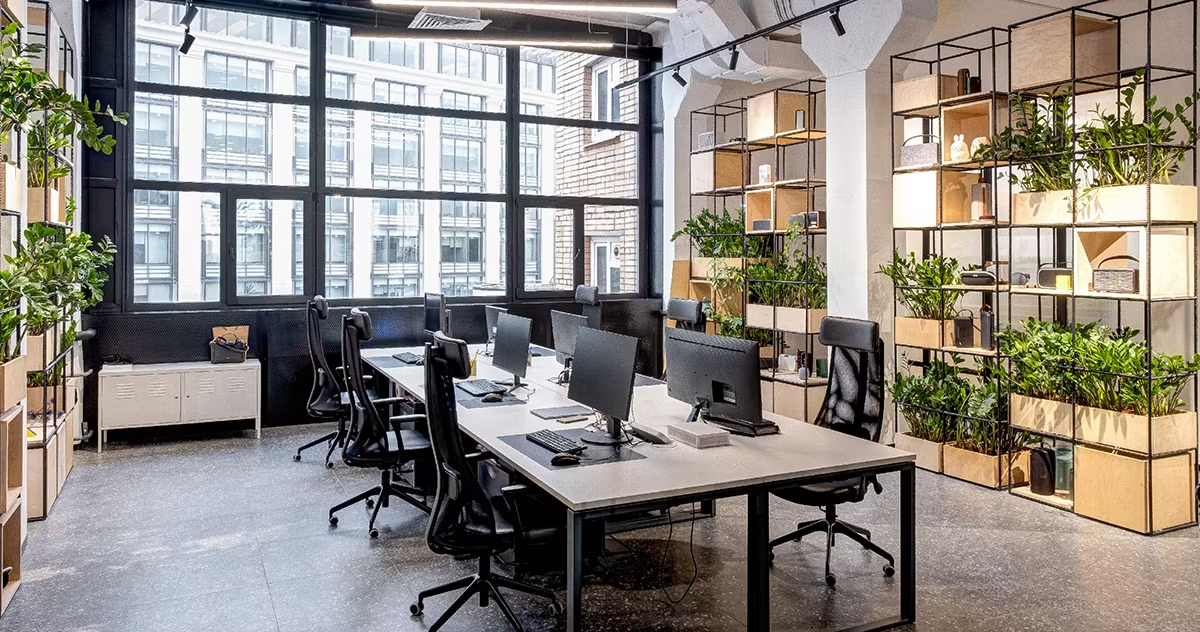In today’s dynamic workplace, office design is no longer just a matter of function alongside has become a strategic asset that significantly affects employee happiness, and productivity along with overall business success. It is not just about doing the same old thing in a different way. In five essential points, this guide looks at the issues that have to be central for any contemporary office design, making it possible for companies to assemble environments which enthuse, motivate and improve performance.
1. Embracing Flexibility
Modern office design needs to take this dynamic nature of the modern workforce into account, as it is always changing. A fundamental idea should be flexibility, which enables spaces to easily adjust to evolving needs, and work styles, in addition to team configurations. Offices can adapt easily to different work modes and accommodate a range of work preferences by implementing features such as movable partitions, modular furniture, and reconfigurable layouts.
In addition to meeting employees’ immediate needs, flexible spaces help the workplace stay current and adaptable to new trends along with technological advancements. With a flexible design, organizations can easily pivot to accommodate growth, adopt new collaborative frameworks, or adopt innovative work methodologies; all while minimizing disruptions as well as optimizing operational efficiency.
2. Fostering Collaboration and Communication
Collaboration and communication are essential for fostering innovation, and problem-solving, as well as group success in today’s linked business environment. The design of modern offices should put an emphasis on creating areas that enable team members to interact and share knowledge with ease. Open floor plans, and well-placed huddle spaces, in addition to interactive common areas can promote spontaneous ideation sessions, casual conversations, and cross-functional teamwork.
Further improving the collaborative experience is the integration of technology into these areas. The utilization of interactive whiteboards, and video conferencing features, as well as uninterrupted connectivity can effectively overcome geographical barriers, allowing distant team members to engage fully and cultivating an environment that is both inclusive and collaborative.
3. Promoting Well-being and Ergonomics
The comfort and well-being of employees must come first in the quest of excellence as well as productivity. In order to create spaces that not only look good, but also promote both physical and mental health, contemporary office design should carefully balance ergonomics along with aesthetics. Workstations with ergonomic designs, movable desks, and supportive seating can lessen weariness and enhance general comfort while lowering the risk of musculoskeletal disorders.
Moreover, adding biophillic features—like natural lighting, vegetation, and outdoor areas, can improve mental health and lower stress levels. These components have been demonstrated to improve mood, sharpen attention, in addition to promoting a feeling of renewal, all of which lead to a more contented and effective workforce.
4. Embracing Sustainability and Eco-Friendly Practices
In a time when environmental awareness is increasing, modern office design must follow path of eco-friendliness along with sustainability. Organisations can cut their carbon footprint, create more sustainable neighbourhoods along with a good working environment, by including energy-efficient lighting and water-saving fixtures, and installing environmentally-friendly materials.
Employees’ perception of a company can make all the difference, and also affects their morale. Of course, the environmental benefits are always obvious. A corporation that commits itself to green operations not only shows its ethical commitment in practice. It also brings something new and different, a sense of pride to the workers.
5. Reflecting Brand Identity and Company Culture
An effective office layout should be a physical manifestation of a business’s corporate culture and brand identity. For visitors, clients, and staff alike, modern office design presents a singular opportunity to integrate these components into the physical space as well as creating a seamless, immersive experience.
Organizations can help employees feel like they belong by using visual components such as logos, and brand colours, in addition to other elements throughout the workplace. Furthermore, incorporating inspirational messaging, artwork, and cultural artifacts can strengthen a company’s sense of values as well as beliefs, increasing employee engagement and mission alignment.
Conclusion
Getting the right balance of usability, looks, and well-being of the workforce is vital when designing contemporary office interior design ideas. Officebanao is a technology-driven platform that transforms the experience of creating, and maintaining, as well as managing offices by organizing the industry, developing standards and processes, and driving transparency.
You can reach them via Whatsapp – 8929399141 or email your queries to inquiry@officebanao.com.

